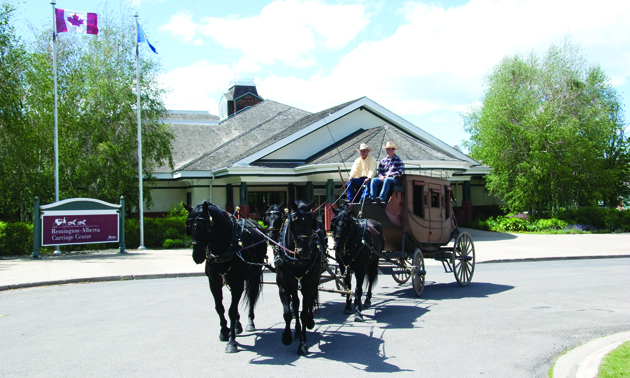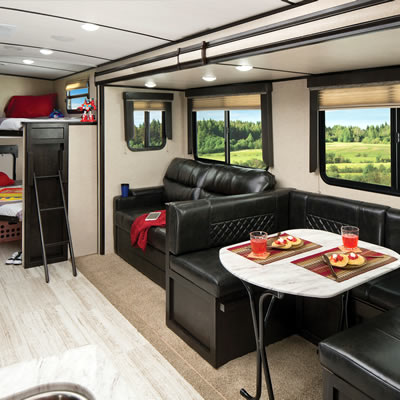Highlights at one of the world’s finest museums
Get a glimpse into the heyday of horse-drawn transportation at the Remington Carriage Museum

In the early 1990s, the McLaughlin family of Oshawa, Ontario, held a family council to decide what would be done with the five family-owned original carriages manufactured and pulled directly off the line of the McLaughlin Carriage Company—the largest horse-drawn carriage factory in the world—more than a century ago. The carriages represented a precious piece of family history that they wanted preserved and maintained, so they turned to the Remington Carriage Museum in Cardston, Alberta.
This prestigious museum is a $16.4-million facility that is said to have the largest and best collection of horse-drawn vehicles in North America. The museum’s main gallery houses one-of-a-kind exhibits that can be seen nowhere else in the world. Utilizing 54 of the 290 vehicles in the museum's collection, the vehicles are each displayed in a unique vignette that hints at that particular vehicle's typical use.
Visitors will see everything from a mountain parks scene showing a stagecoach and a Yellowstone wagon once used as an early tourist vehicle to a day-at-the-races-style vignette that features elegant upper-class carriages. Other examples include a fire hall, a Victorian street scene and a campfire scene with a chuckwagon and farm wagon. There is even a display of an actual McLaughlin Carriage dealership from Edmonton circa 1914—it features those lovingly cared-for vehicles that were crated up and shipped across the country by the McLaughlin family.
Making the museum not so secret
Anyone who has physically walked through the doors of the Remington Carriage Museum can attest to the museum's grandeur—from its collection and displays all the way down to its staff and grounds.
In fact, the Remington has ranked number 1 for 14 years running in visitor satisfaction surveys put out by the Alberta government—not in just one category, but in nearly every category, according to Howard Snyder, the museum's manager. He added that in most years, the Remington Carriage Museum was 10 per cent higher in points over even the second highest ranked.
“That’s the kind of response we’ve gotten from the majority of the travelling public,” said Snyder.
The problem, Snyder said, is that people seem to have preconceived notions of what a carriage museum is, so the challenge is to find a way to counter that resistance so that people will come and visit.
“Every day throughout the summer season, we hear some variation of ‘I didn’t know if I really wanted to come or not—I mean how interesting can old carriages really be? But boy, I’m glad I did, and I’m going to bring my family and friends with me next time,’ ” said Snyder.
Snyder likes to hear these kinds of comments.
“We’re glad to hear it," he said, "but for every person that says that, there are 10 more that pass us by because they didn’t think they’d be interested. The problem we have is not in satisfying our visitors but rather in getting them here in the first place.”
An even wider appeal
This is a problem Snyder said the museum is hoping to overcome with the addition of something new: displays featuring the other side of the horse-drawn carriage equation—the horses themselves.
“The history of horses dates back 12,000 years,” said Snyder, “and we have one of the greatest paleontological discoveries in the world on our doorstep, housing horse, camel and mastodon tracks and bones—all within five miles of Cardston.”
Still under development, it’s a story Snyder said the museum is hoping to tell soon, but one that only complements—not replaces—the story they’re already telling, and telling well.
“Horse-drawn transportation was involved in every facet of life 100 and more years ago,” said Snyder. “Recreation, industry, transportation, you name it—it all involved horse-drawn transportation, and you can see it all here at the Remington Carriage Museum.”






